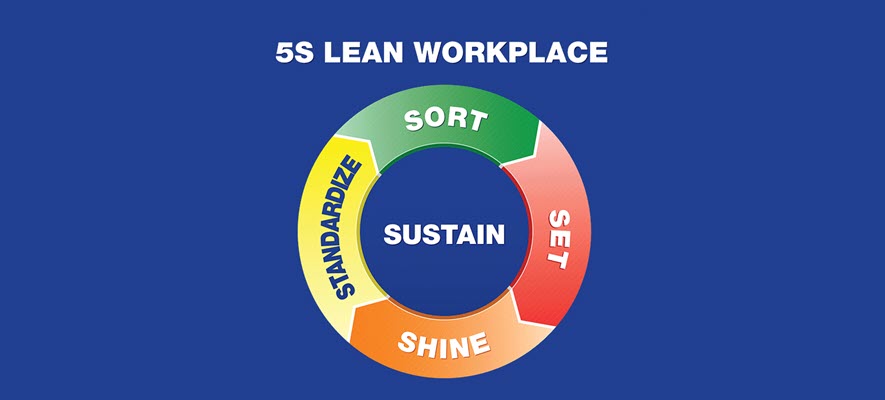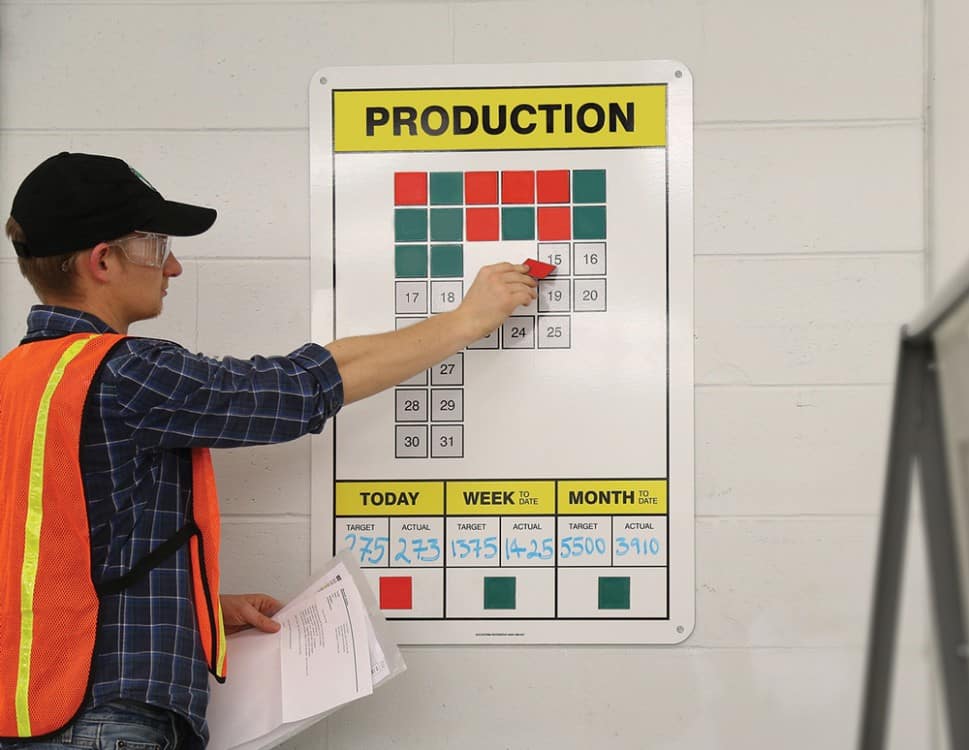
Making 5S Stick in Your Shop

This article, Making 5S Stick in your Shop, by Wayne Chaneski, originally appeared in Modern Machine Shop in July of 2004.
I am often asked for suggestions on how to make a 5S program (the sort, set in order, shine, standardize and sustain program for improving workplace organization) really work as opposed to becoming just another “program of the month.” It’s an interesting question. I can say from personal experience that some companies do a great job of integrating 5S into their organizations and realizing significant benefits, while others never really do. I believe the following are essential not only for a successful 5S program, but for any program that seeks to introduce and sustain positive change in an organization.
1. Make it clear how the program will benefit the employees.
The benefit does not always have to equate to individual monetary rewards, but it should be focused on company success and growth for the long term. Will a neat, clean, safe, orderly workplace (the objective of the 5S program) make everyone’s job easier? The answer is “yes.” The ability to find things when needed makes everyone’s life easier. If all employees have an easier time doing their jobs, can we expect an improvement in workplace efficiency? Again, we can answer in the affirmative. Eliminating the time spent searching for things will provide more time for the activities that really add value and allow us to satisfy our customers in a cost-effective way.
Will all this lead to increased business and long-term organizational stability and growth? Although there are no crystal balls guaranteeing the future, it is reasonable to assume that if we can consistently satisfy our customers and make money doing it, we should all be facing a bright future.
2. Ensure that your employees have an opportunity to get involved.
This applies both to initial training and any follow-up activities needed to implement the program. Most employees, if asked, are willing to offer ideas to improve operations. Many want to be asked. We must provide opportunities for this type of employee to enlist support and gain buy-in on the program.
3. Communicate progress made.

Clear, and preferably visual, communication is essential to sustaining change. If employees do not see that things are getting better, it will be hard for them to maintain enthusiasm. When it comes to 5S, checklists, scorecards, charts and “before and after” photographs can be posted in visible areas to show compliance and summarize progress made throughout the program. Communicating instances of program compliance, as well as plans for addressing non-compliance, will motivate employees to stick with the program.
4. Be willing to tackle problems of non-compliance head-on.
Management personnel must be willing to address issues of non-compliance. This requires a willingness to ask employees about specific instances when a program is not being followed. When a manager asks why something is out of place or not properly maintained, he or she will be seen as caring about the situation and therefore supportive of the program. If the manager avoids or ignores a non-compliant situation, this sends the signal that the program is not really that important after all.
Of course, when confronting an employee about a non-compliance issue, managers must be willing to listen to reasons for the non-compliance. If the cause is negligence (“I forgot to put that away”), this needs to be remedied immediately. However, if the cause is systemic (“the maintenance department did not have the parts to fix the leak”), the remedy will be very different.
Just as important as the need to address non-compliance is the manager’s need to recognize compliance. For example, complementing an employee on a well-organized work station sends a positive message and reinforces the importance of the program.
5. Recognize the need for ongoing reinforcement.
Just as certain actions are required to get programs started, other actions will be required to keep them going. Concept training must be planned for all new employees, while employees who have been through this training must receive periodic refresher sessions. Performance communication must continue. In a 5S program, if checklists, charts, graphs, photos and message boards are scheduled for regular updates, they must indeed be updated.
The moment reinforcement of a program stops, its importance in the eyes of employees drops. Managers don’t necessarily have to be the drivers of all programs, but they must support and reinforce the importance of all programs that are in place.
After putting all the effort into a 5S program or any other type of program of change in your organization, don’t fall victim to employee perceptions of “nobody else cares, so why should I?”
Check out The 5S Store to find everything you need for making 5S stick in your workplace.

